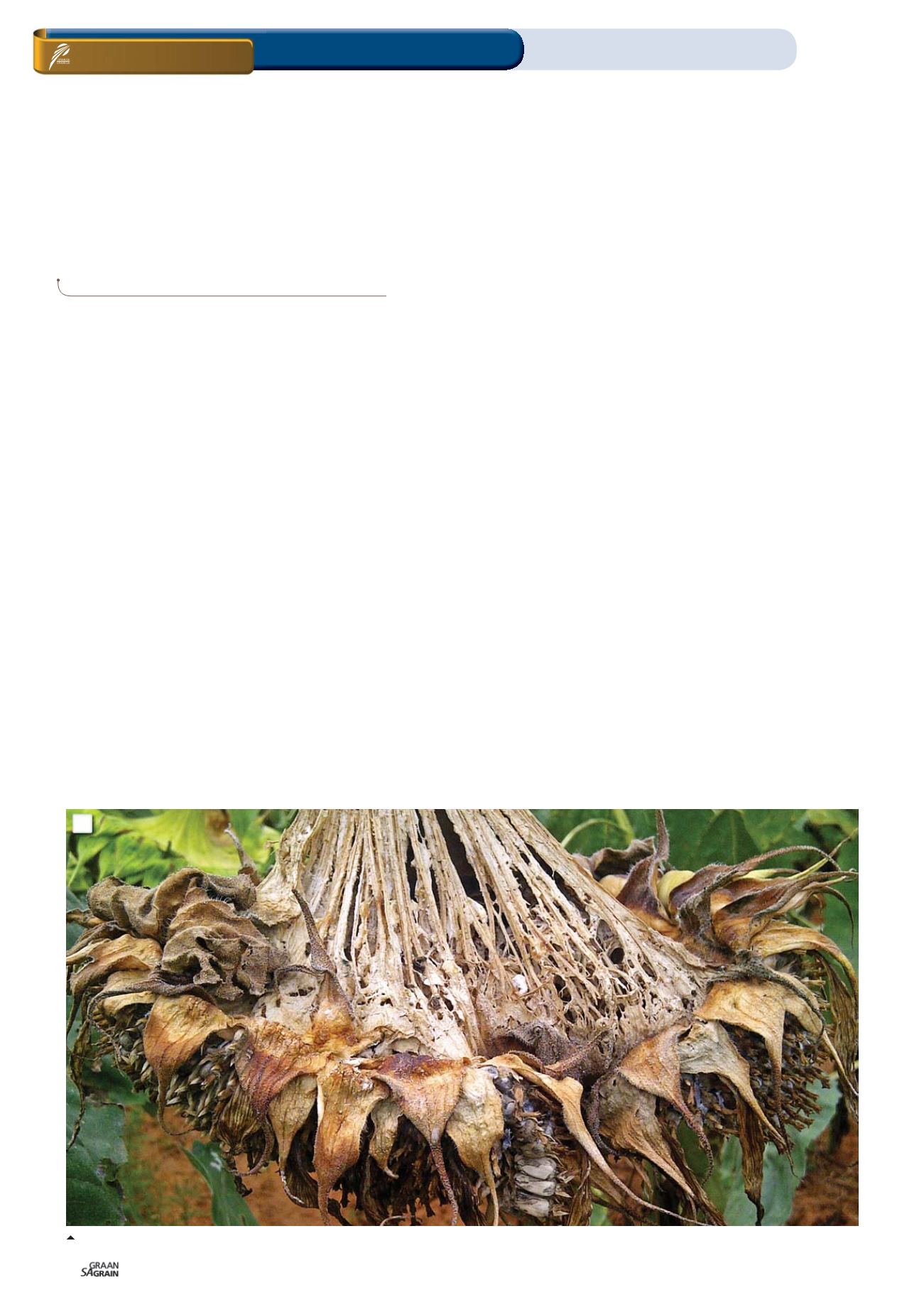

Maart 2018
90
Sclerotinia head rot of sunflower:
A continuing threat
S
clerotinia sclerotiorum
is a fungal pathogen, which infects
sunflowers, causing Sclerotinia head or stem rot diseases.
This fungus attacks a wide range of field crops including
soybeans, beans, canola and lupins as well as various veg-
etable crops.
Sclerotinia stem rot of sunflowers is not a direct major threat to sun-
flower production with isolated plants in a field being infected. How-
ever, Sclerotinia head rot of sunflowers can cause major damage
– particularly in late-planted crops that ripen in cool, wet conditions.
Recently this disease has spread in the local sunflower production
areas with high incidences, up to 90%, being recorded in fields in
the North West Province and northern Free State provinces of South
Africa. This last season severe damage was recorded in the primary
sunflower production areas, which implies that there are high levels
of inoculum on these fields that may cause challenges this coming
season should late rains be experienced.
The continued spread of this disease is a major threat for sunflower
production in South Africa. Increased disease pressure will also im-
pose an increased threat on production of other susceptible crops,
particularly soybeans.
The wide host range infected by the disease and increased disease
pressure will indirectly impact on maize production by reducing
much needed crop rotation options, particularly where conservation
tillage practices are on the increase. A lack of alternate crops in crop
rotation systems will force producers to plant maize under monocul-
ture, which, particularly under conservation tillage systems, brings a
different set of disease problems.
Symptoms of the disease
Head rot
The fungus infects the back of the head and the tissue becomes soft,
light brown and spongy. This infection extends into the developing
head (
Photo 1
) and down the stalk and eventually only the fibrous
strands at the back of the head and upper stalk remain.
The infected seed at the front of the head eventually falls out of the
head due to sheer weight of the infected seed. Large, black sclerotia
develop below the seed layer and around the seeds (
Photo 2
).
Biology of the disease
Head rot
During periods of high rainfall and cool temperatures during head
fill, the disease is most prominent. Saturated soil results in produc-
tion of apothecia from germinating sclerotia. These apothecia are
small mushroom-like fruiting bodies and look like a golf tee.
Apothecia form and release spores into the air, which are windborne
and infect the sunflower head during wet weather. The spores use
dead flower parts as a food source as they cannot infect healthy
tissue.
Once the fungus becomes established, it produces oxalic acid, which
kills tissues, as well as extracellular enzymes, which digest tissues,
ON FARM LEVEL
Fungal pathogen / Sunflower / Head rot
Integrated pest control
PROF BRADLEY FLETT,
ARC-Grain Crops, Potchefstroom
1: Fibrous strands at upper end of stalk and head as a result of Sclerotinia head rot damage.
Photo: Dr André Nel, ARC-Grain Crops
1
















